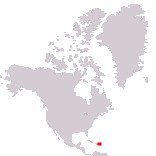Home > North America > Dominican Republic

Dominican Republic
República Dominicana
República Dominicana
Government type Presidential republic
Area 48,671 km² (18,792 sq mi)
Population 10,772,000 inh. (2022 census)
Population density 221 inh/km² (573 inh/mi²)
Area 48,671 km² (18,792 sq mi)
Population 10,772,000 inh. (2022 census)
Population density 221 inh/km² (573 inh/mi²)
Capital Santo Domingo (1,029,000 pop., 4,345,000 urban aggl.)
Currency Dominican peso
Human development index 0.767 (80th place)
Languages Spanish (official), Haitian Creole
Life expectancy M 71 years, F 77 years
Currency Dominican peso
Human development index 0.767 (80th place)
Languages Spanish (official), Haitian Creole
Life expectancy M 71 years, F 77 years
GEOGRAPHY DATA OF DOMINICAN REPUBLIC
Largest cities
Santo Domingo 1,029,000 pop., 4,345,000 urban aggl.
Santiago de los Caballeros 561,000 pop.
Los Alcarrizos 255,000 pop.
Higüey 234,000 pop.
San Cristóbal 229,000 pop.
La Vega 222,000 pop.
San Pedro de Macorís 218,000 pop.
Highest mountains
Pico Duarte 3,098 m (10,164 ft)
Longest rivers
Rio Yaque del Norte 296 km (184 mi)
Largest lakes
Lake Enriquillo 265 km² (102 sq mi)
Largest islands
Hispaniola 76,192 km² (29,418 sq mi) total, including the Haitian portion
Saona 105 km² (41 sq mi)
Beata 42 km² (16 sq mi)
Catalina 9 km² (3.5 sq mi)
ADMINISTRATIVE DIVISIONS OF DOMINICAN REPUBLIC
Dominican Republic is administratively divided into 31 provinces, plus the capital district; the provinces of San Juan and La Altagracia are the largest and the only ones to exceed 3,000 km² in area, while Santiago, with a population of nearly three million inhabitants, is by far the most populated province.At the 2022 census there were two cities over half a million inhabitants, the capital Santo Domingo and Santiago de los Caballeros, while another 11 urban centers exceeded the threshold of one hundred thousand people; as can be seen on the second map, the distribution of the main cities is not very homogeneous, with some areas of the country without significant inhabited centers.

